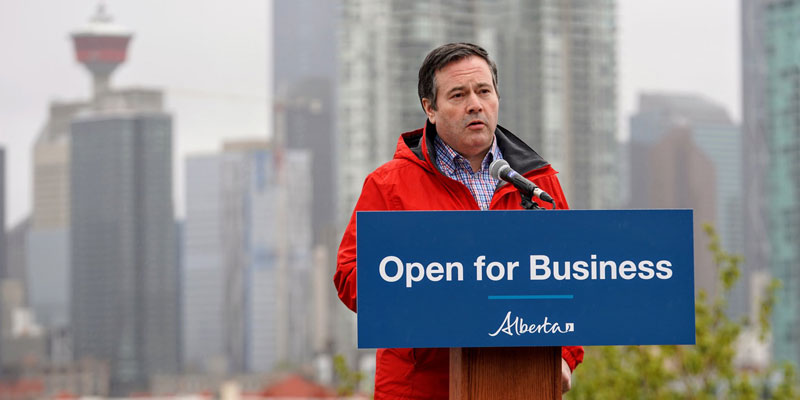New report underscores Alberta’s fiscal woes

It’s no secret that Alberta’s finances are in a precarious position. The Kenney government faces large budget deficits and rising debt levels that have put the province on an unsustainable fiscal track. Fortunately, the Alberta government can draw lessons from its own history to repair the province’s finances.
A new report from the Parliamentary Budget Officer (PBO) analyzes the sustainability of the province’s finances (including provincial, local and Indigenous governments). According to the PBO, a government’s fiscal path is sustainable if the province’s debt relative to the size of the economy (GDP) remains flat or declines over time. If a province’s debt increases as a share of the economy, the government finances are unsustainable.
According to the PBO, Alberta is one of seven provinces with unsustainable finances. The province’s “fiscal gap” is equivalent to 3.1 per cent of the provincial economy, meaning Alberta must either raise revenue or cut spending by this amount (on a permanent basis) to achieve long-term sustainability.
This is not a surprising conclusion given that Alberta finances were in bad shape before COVID and only worsened during the pandemic. Between 2008/09 and 2019/20, the province incurred persistent budget deficits (excluding 2014/15) while net debt (total liabilities minus financial assets) surged by $71.8 billion.
Alberta’s finances also took a major hit from the COVID recession. The provincial budget deficit rose from a projected $6.8 billion to $20.2 billion in 2020/21. Subsequently, the Kenney government’s plan to balance the budget by 2022/23 was quickly thrown off course.
To make matters worse, deficits are projected indefinitely and net debt will reach a projected $102.1 billion by 2023/24. Albertans pay interest on this debt, which will cost a projected $3.3 billion in 2023/24. Every dollar that goes towards debt interest is a dollar no longer available for programs and services including health care, education and/or tax relief.
Alberta is in serious need of fiscal solutions. Fortunately, the Kenney government can learn lessons from past Alberta governments.
Indeed, today’s situation parallels the 1990s when Alberta faced some of the largest deficits in history. To tackle Alberta’s deteriorating fiscal position in the early 1990s, the Klein government introduced swift broad-based spending reductions, reducing per-person (inflation-adjusted) program spending (total spending minus interest costs) from $11,040 in 1992/93 to $7,447 in 1996/97.
Government-sector employment shrank by 14.1 per cent from 1993 to 1997, compensation was reduced for remaining provincial government employees, and many services were contracted to nongovernmental agencies. As a share of the economy, the size of government was reduced from 21.2 per cent (1992/93) to 13.1 per cent by 1998/99.
The result was a quick return to balanced budgets, declining net debt and fewer tax dollars diverted to debt interest. These reforms also set the stage for nearly a decade of fiscal stability.
Undoubtedly, the spending reductions in the ’90s included some low hanging fruit. But the general approach remains valid—assess the efficiency and efficacy of all areas of spending and reduce spending where appropriate.
Alberta’s finances are on an unsustainable track but the Kenney government can look at recent history, including the Klein era, for solutions.
Authors:
Subscribe to the Fraser Institute
Get the latest news from the Fraser Institute on the latest research studies, news and events.

